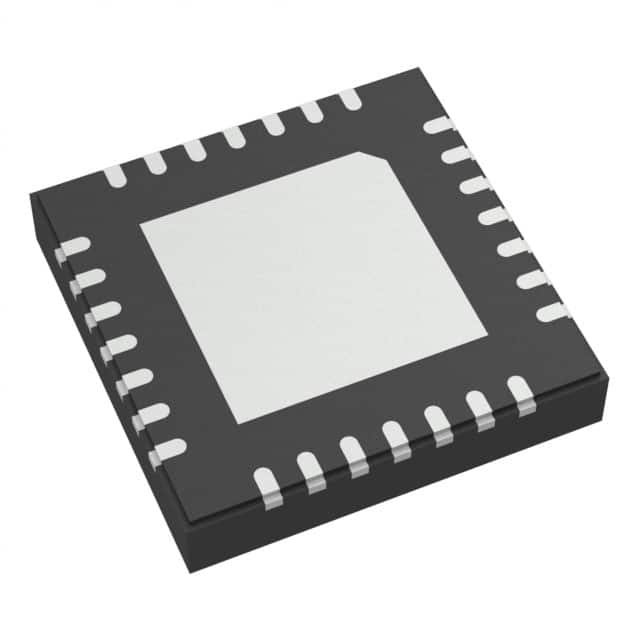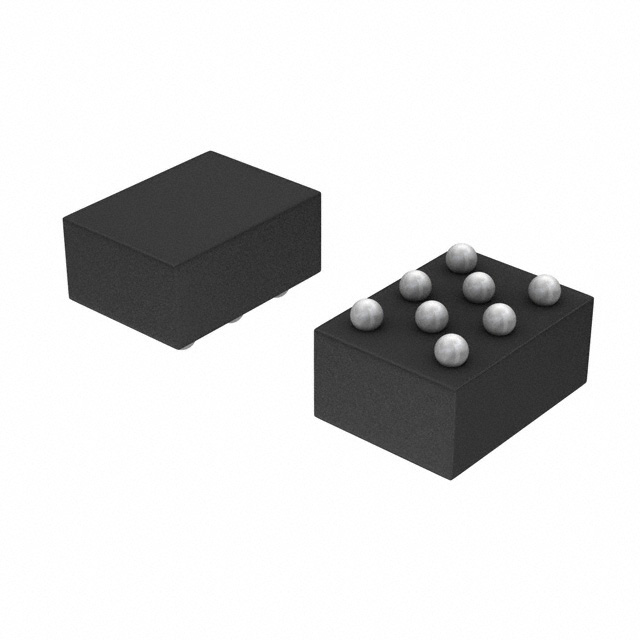Ⅰ. PMIC - Voltage Regulators - DC DC Switching Regula
Ⅱ. Physical Characteristics of PMIC - Voltage Regulators - DC DC Switching Regula
Ⅲ. Electrical Characteristics of PMIC - Voltage Regulators - DC DC Switching Regula
PMIC - Voltage Regulators - DC DC Switching Regula
A Power Management Integrated Circuit (PMIC) is a specialized integrated circuit that handles various power-related functions in electronic devices. One of the key components within a PMIC is the DC-DC switching regulator. A DC-DC switching regulator is a type of voltage regulator that efficiently converts one DC voltage level to another using high-frequency switching techniques.

The primary function of a DC-DC switching regulator is to provide a stable output voltage by adjusting the duty cycle of the switching element. It can step up (boost) the input voltage to a higher output voltage or step down (buck) the input voltage to a lower output voltage, depending on the application requirements.
Here are some important aspects to understand about DC-DC switching regulators within PMICs:
1.Efficiency: DC-DC switching regulators are known for their high efficiency compared to linear regulators. By rapidly switching the input voltage, they minimize power dissipation and maximize energy conversion efficiency. This makes them suitable for applications where power efficiency is critical, such as battery-powered devices or power-hungry applications.
2.Switching Topologies: DC-DC switching regulators can employ various switching topologies to perform the voltage conversion. Some common topologies include buck, boost, buck-boost, and flyback. Each topology has its advantages and is selected based on the specific requirements of the application.
3.Control Techniques: Switching regulators utilize control techniques to regulate the output voltage. Pulse-width modulation (PWM) and pulse frequency modulation (PFM) are commonly used control techniques. These techniques adjust the duty cycle of the switching element based on feedback from the output voltage, ensuring a stable and regulated output.
4.Switching Frequency: DC-DC switching regulators operate at high switching frequencies, typically ranging from tens of kilohertz to several megahertz. The switching frequency affects the size of the external components used in the regulator and influences the trade-off between efficiency and component size.
5.External Components: Switching regulators require external components such as inductors, capacitors, and resistors to function properly. The selection and sizing of these components are critical for achieving the desired performance and stability. The datasheet and application notes of the specific regulator should provide guidelines for selecting and connecting these external components.
6.Protection Features: DC-DC switching regulators often incorporate protection features to ensure safe operation. These features can include overvoltage protection, undervoltage lockout, overcurrent protection, thermal shutdown, and short-circuit protection.
7.EMI Considerations: The high-frequency switching action of DC-DC switching regulators can generate electromagnetic interference (EMI). Proper layout and filtering techniques are necessary to minimize EMI and ensure compliance with electromagnetic compatibility (EMC) standards.
DC-DC switching regulators are widely used in a variety of applications, including smartphones, tablets, laptops, automotive electronics, industrial equipment, and more. They provide efficient and regulated power conversion, allowing electronic devices to operate reliably and efficiently.
It's important to consult the datasheet, application notes, and reference designs provided by the manufacturer to understand the specific characteristics, features, and usage guidelines of the DC-DC switching regulator within the PMIC you are working with.
Physical Characteristics of PMIC - Voltage Regulators - DC DC Switching Regula
The physical characteristics of a PMIC voltage regulator, specifically the DC-DC switching regulator, can vary depending on the specific IC and manufacturer. However, there are some common physical characteristics that can be discussed:
1.Package Type: The DC-DC switching regulator is typically housed in a specific package type, such as QFN (Quad Flat No-leads), BGA (Ball Grid Array), SOP (Small Outline Package), or DIP (Dual Inline Package). The package type determines the physical dimensions and pin configuration of the IC.
2.Pin Count: The DC-DC switching regulator can have different pin counts depending on its complexity and functionality. Common pin counts include 8, 16, or 20 pins, but higher pin count options are also available for more advanced PMICs.
3.Dimensions: The dimensions of the DC-DC switching regulator IC can vary based on the package type. It is typically specified in millimeters (mm) and includes the length, width, and thickness of the package.
4.Thermal Considerations: DC-DC switching regulators can generate heat, especially during high-power operations. To manage heat, these ICs may have thermal characteristics such as a thermal pad or exposed metal pad on the bottom of the package for better heat dissipation. The datasheet of the specific DC-DC switching regulator should provide information on its thermal properties, including thermal resistance and recommended PCB layout guidelines for efficient heat dissipation.
5.Operating Temperature Range: The DC-DC switching regulator has an operating temperature range within which it can function reliably. This range is typically specified in degrees Celsius (°C) and indicates the minimum and maximum temperatures at which the IC can operate without adverse effects on performance.
6.Input/Output Capacitance: DC-DC switching regulators may have specified input and output capacitance requirements for stability and performance. These capacitance values represent the recommended capacitance that should be connected to the input and output pins of the IC to ensure proper operation.
7.Voltage Ratings: The DC-DC switching regulator may have voltage ratings that specify the maximum input voltage it can handle, as well as the desired output voltage levels. These voltage ratings are important for ensuring the IC's safe and correct operation.
It's important to note that the physical characteristics of a DC-DC switching regulator can vary significantly depending on the specific manufacturer, product line, and application requirements. Therefore, referring to the datasheet or product documentation of the specific DC-DC switching regulator you are working with is crucial for obtaining accurate and detailed information about its physical characteristics.

Electrical Characteristics of PMIC - Voltage Regulators - DC DC Switching Regula
The electrical characteristics of a PMIC voltage regulator, specifically the DC-DC switching regulator, are important parameters that determine its performance and compatibility with a given application. Here are some key electrical characteristics to consider:
1.Input Voltage Range: The DC-DC switching regulator has a specified input voltage range within which it can regulate the output voltage properly. It is important to ensure that the input voltage falls within this range to maintain stable operation.
2.Output Voltage Range: The DC-DC switching regulator is designed to provide a regulated output voltage within a certain range. This range should be compatible with the requirements of the target application.
3.Output Current Capacity: The DC-DC switching regulator has a maximum output current capacity, which represents the maximum load current it can deliver while maintaining the specified output voltage. Exceeding this limit may result in degraded performance or even damage to the IC.
4.Efficiency: Efficiency is an important electrical characteristic that indicates how effectively the DC-DC switching regulator converts the input power to the output power. It is calculated by dividing the output power by the input power and is typically specified as a percentage. Higher efficiency indicates less power loss during the voltage conversion process.
5.Switching Frequency: The switching frequency of the DC-DC switching regulator refers to the rate at which the input voltage is switched on and off to regulate the output voltage. It is typically specified in kilohertz (kHz) or megahertz (MHz). The switching frequency affects the size of the external components, such as inductors and capacitors, used in the regulator design.
6.Load Regulation: Load regulation is a measure of how well the DC-DC switching regulator maintains a constant output voltage as the load current varies. It is typically specified as a percentage of the output voltage change for a given change in load current.
7.Line Regulation: Line regulation refers to the ability of the DC-DC switching regulator to maintain a constant output voltage as the input voltage varies. It is specified as a percentage of the output voltage change for a given change in input voltage.
8.Transient Response: Transient response refers to how quickly the DC-DC switching regulator can respond to sudden changes in load or input voltage. It is measured by the amount of time it takes for the output voltage to stabilize after a transient event.
9.Protection Features: Many DC-DC switching regulators incorporate various protection features to safeguard the IC and the connected circuitry. These may include overcurrent protection, overvoltage protection, thermal shutdown, and short-circuit protection.
10.Control Method: The DC-DC switching regulator utilizes a control method, such as pulse-width modulation (PWM) or pulse frequency modulation (PFM), to regulate the output voltage. The specific control method used can affect the regulator's performance and characteristics.
It's important to consult the datasheet or product documentation of the specific DC-DC switching regulator you are working with to obtain accurate and detailed information about its electrical characteristics. These specifications will help ensure proper selection and utilization of the voltage regulator for your application.



